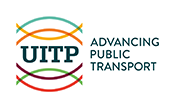Over the last decades, ticketing and payment systems in public transport have quickly evolved. After replacing paper tickets with automatic fare collection systems, contactless payments cards have been on the rise since 2010. Shortly after, open loop payment was introduced, combining the merits of both smart card tickets and payment cards into one system.
Open loop payment allows passengers to simply pay for mobility as they pay for other things and to experience the convenience and simplicity of contactless pay for mobility. Offering this option could help attract new customers, improve customers’ journey experience, enable cost savings and operational efficiencies, and use technology to better meet your customer’s needs.
Implementation Roadmap
While the motivations, ambitions and starting points can be different, there is a sequence of advised steps to follow to successfully implement open loop payment in public transport.
The Urban Mobility Open Payments Forum is currently working to develop an implementation roadmap aiming to guide PTOs and PTAs through the planning, implementation and improvement of open loop payment in public transport networks. In the run up to the publication, the Forum will publish a series of articles exploring each step, highlighting the points to look out for, and case studies of those who took the plunge before.
In this first post, we’ll lay out all the steps of the implementation roadmap.
 1. Strategic vision
1. Strategic vision
The starting point for the journey to implement open loop payment should be a clear understanding of why you want to implement open loop payment.
- What do you want to achieve as an organisation?
- What customer experience do you want to provide?
- What could be the implications of open loop payment on your business model and internal processes?
2. Concept outline
Having your ambitions confirmed, it’s important to understand the changes you need to implement and pre-requisites you need to put in place.
- What internal processes are affected and what are the updates that need to be made?
- Who are your primary stakeholders?
- What agreements need to be in place with external stakeholders to be able to accept payment from bank cards?
- What is your funding approach ?
- How could you move from status quo to making open loop payment available for your passengers?
3. Tendering and procurement
A clear idea of your vision is the basis for describing your needs and expectations and enabling the market to come up with a good answer. Ensure you know the answer to questions such as:
- Who are the partners you need on board to implement your open loop payment system?
- How do you identify technology and service suppliers with the capabilities and experience needed to support you?
- Reflecting on the concept outline you have built, what products and solutions will be off the shelf and what needs to be customised?
4. Development, testing and certification
Having all the needed partners in place, it’s time to build the system that can deliver what you expect and make sure that it works. It’s crucial to ensure that the customers stays at the heart of everything you do. This step will be successful when:
- All front and back-end equipment is correctly set up and integrated
- The back office and admin processes deliver all expected customer experience journeys
- The entire system is rigorously tested and certified to comply with standards and requirements
- Your staff is trained and have been involved in internal testing
5. Launch
Once your open loop payment system is tested and certified, your employee training is complete and servicing capabilities are in place, it’s time to go live. Some supporting activities have to be considered to ensure a smooth launch and speedy uptake.
- How to map out a roll-out strategy that allows validating the new payment option with a limited number of users and grow from there?
- What measures help to generate public awareness about the new payment option and how to use it?
- What incentives could be used to get customers buy-in in order to build a critical mass for success?
6. Review and refine
Most likely, the first open loop solution is only the first step in an exciting journey. Once the open loop payment system is launched and working, it’s time to focus on improvement and further development. Here, feedback from customers and employees is essential. Furthermore, in order to build on the momentum of the launch, it would be advisable to:
- Monitor the uptake in order to understand how customers accept the new payment option and where more opportunities might be
- Preparing the next steps to work towards the vision you want to achieve
Keep an eye out for the following articles diving deeper into the next steps.
Want to know more about open loop payment? On 25 April, join the free Webinar ‘Demystifying Contactless Open Loop Payment in Public Transport’. Please register on the UITP website.



